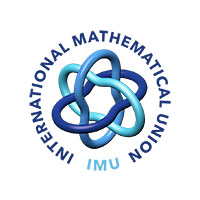Awarded by ICTP and IMU for young mathematicians from developing countries
The Ramanujan Prize for young mathematicians from developing countries has been awarded annually since 2005. It was originally instituted by ICTP, the Niels Henrik Abel Memorial Fund, and the International Mathematical Union (IMU). The participation of the Abel Fund ended in 2012, while the Department of Science and Technology of the Government of India (DST) has funded the Prize for a 10 year period, from 2014 to 2023.
The Prize is awarded annually to a researcher from a developing country who is less than 45 years of age on 31 December of the year of the award, and who has conducted outstanding research in a developing country. Researchers working in any branch of the mathematical sciences are eligible. The Prize carries a $10,000 cash award. The winner will be invited to ICTP to receive the Prize and deliver a lecture. The Prize is usually awarded to one person, but may be shared equally among recipients who have contributed to the same body of work. Past recipients of the Ramanujan Prize are listed below.

Srinivasa Ramanujan
A genius in pure mathematics
Srinivasa Ramanujan was born in 1887 in Erode, Tamil Nadu, India. He grew up in poverty and hardship. Ramanujan was unable to pass his school examinations, and could only obtain a clerk’s position in the city of Madras. However, he was a genius in pure mathematics and essentially self-taught from a single text book that was available to him. He continued to pursue his own mathematics, and sent letters to three mathematicians in England, containing some of his results. While two of the three returned the letters unopened, G.H. Hardy recognized Ramanujan’s intrinsic mathematical ability and arranged for him to go to Cambridge. Hardy was thus responsible for making Ramanujan’s work known to the world during the latter’s own lifetime.
Ramanujan made spectacular contributions to elliptic functions, continued fractions, infinite series, and analytical theory of numbers. His health deteriorated rapidly while in England. He was sent home to recuperate in 1919, but died the next year at the age of 32.
The Selection Committee takes into account not only the scientific quality of the research, but also the background of the candidate and the environment in which the work was carried out. The committee's evaluation will give due consideration to the background of the nominated candidate, the environment and circumstances under which the nominee carried out the research work and make selection in favour of a researcher who worked under challenging conditions to make remarkable achievements in mathematics. The Committee consists of eminent mathematicians appointed in consultation between the ICTP and the IMU.
















